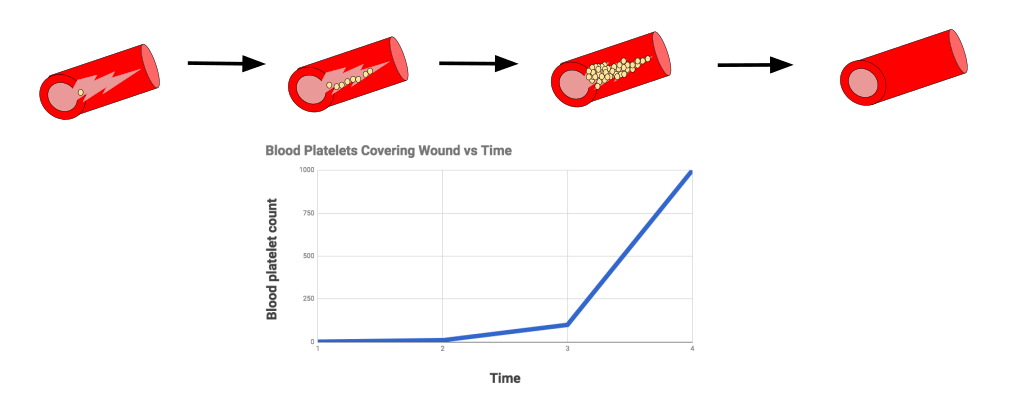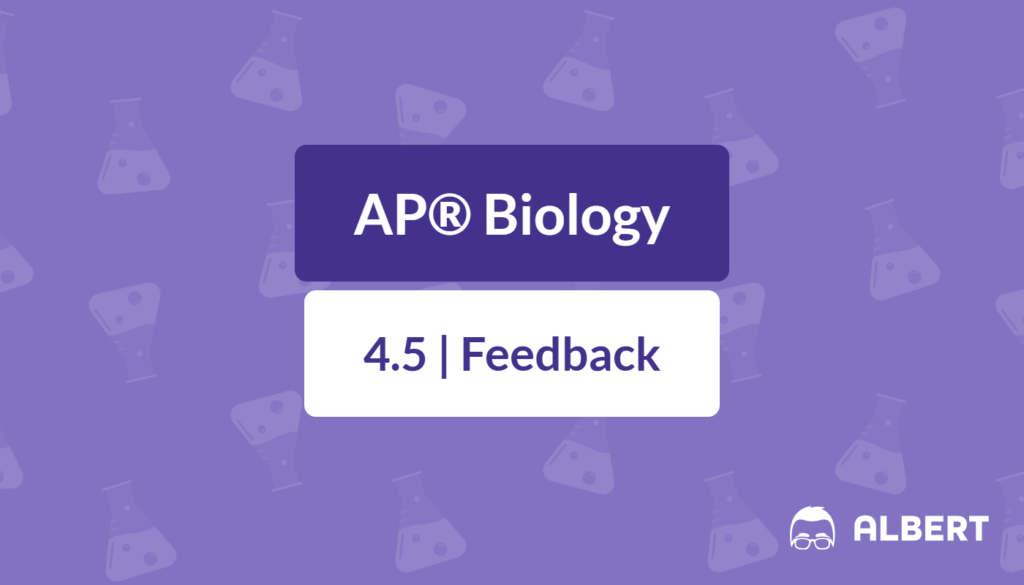What We Review
Introduction
Feedback mechanisms are vital to all living organisms, helping them maintain stability (homeostasis) and appropriately respond to changing environments. In AP® Biology, understanding the distinction between positive vs negative feedback loops is essential, as these mechanisms underpin many physiological processes. In this review, we will explore what feedback mechanisms are, delve into the functions of both negative and positive feedback, and provide examples illustrating their roles. We will conclude with some practice questions to help solidify your understanding.
Overview of Feedback Mechanisms
Feedback mechanisms are regulatory processes that help maintain an organism’s internal conditions within a specific range or move them away from a set point when necessary. They can be likened to a control system in which a stimulus triggers a response, and the outcome of that response influences the operation of the system in a continuous loop. These mechanisms are crucial for:
- Maintaining stable internal conditions (temperature, pH, blood pressure, etc.).
- Responding to environmental changes (e.g., stress, injury).
- Ensuring the efficient functioning of complex physiological processes.
Negative Feedback Mechanisms
A. Description and Function
Negative feedback loops work to counteract changes from a set point, thereby stabilizing conditions. When a variable deviates from its normal range, negative feedback mechanisms reduce the difference, pushing the variable back toward its set point. This makes them essential for homeostasis, preventing excessive fluctuations that could be harmful to the organism.
B. Examples of Negative Feedback Mechanisms
- Temperature Regulation:
- When body temperature rises, the hypothalamus in the brain detects the change and triggers sweating and vasodilation (widening of blood vessels), helping to release heat.
- Conversely, when body temperature drops, shivering and vasoconstriction (narrowing of blood vessels) help conserve heat.
- Blood Glucose Regulation:
- After a meal, blood glucose levels rise. The pancreas releases insulin, which facilitates the uptake of glucose by cells, lowering blood sugar levels.
- When blood glucose levels drop between meals, the pancreas releases glucagon, which stimulates the release of stored glucose, increasing blood sugar levels.
- Blood Pressure Regulation:
- Sensors in blood vessels detect changes in blood pressure. If pressure is too high, signals reduce heart rate and dilate blood vessels; if too low, heart rate increases and vessels constrict.
C. Role in Homeostasis
Negative feedback loops are integral to maintaining stable internal conditions. By detecting deviations and initiating corrective actions, they ensure that vital physiological parameters remain within a healthy range.
Positive Feedback Mechanisms
A. Description and Function
Positive feedback loops serve to amplify or intensify a particular response rather than counteracting it. Once triggered, they move a system further from its initial set point. While less common than negative feedback, positive feedback is crucial for processes that benefit from acceleration or a rapid, self-perpetuating cycle.
B. Examples of Positive Feedback Mechanisms
- Childbirth (Oxytocin Release):
- The hormone oxytocin, released from the pituitary gland, intensifies uterine contractions. More contractions lead to more oxytocin release, further intensifying contractions until the baby is born.
- Blood Clotting (Platelet Activation):
- When a blood vessel is injured, platelets adhere to the site and release chemical signals to recruit more platelets. This cascade accelerates the clotting process to seal the wound quickly.

C. Impact on Homeostasis
While positive feedback loops temporarily move a system away from its set point, they are crucial in situations requiring a swift, decisive outcome. However, if left unchecked, positive feedback can be harmful by driving the system too far in one direction.
Comparing Positive vs Negative Feedback
- Direction of Response:
- Negative feedback loops return the system to a set point.
- Positive feedback loops push the system further away from a set point.
- Biological Advantage:
- Negative feedback is ideal for maintaining homeostasis (e.g., temperature, blood glucose).
- Positive feedback is advantageous when rapid escalation or a significant change is needed (e.g., childbirth, blood clotting).
- Frequency of Occurrence:
- Negative feedback is more common in daily physiological processes.
- Positive feedback is used selectively for specific processes.
Practice Questions
- Label each scenario as a positive or negative feedback mechanism. Explain your reasoning.
- The release of insulin in response to elevated blood glucose.
- Amplification of platelet accumulation during blood clot formation.
- Production of oxytocin during labor and delivery.
- Describe a scenario (other than temperature regulation) where the body uses negative feedback to maintain homeostasis.
- In your own words, explain why positive feedback loops are less common than negative feedback loops in normal physiological processes. What potential risks might be associated with a sustained positive feedback loop?
- Provide a real-world example (outside human biology) of a negative feedback loop in nature, and outline the steps involved.
Conclusion
In summary, feedback mechanisms are critical for life. Negative feedback loops (e.g., body temperature and blood glucose) help organisms maintain stable internal conditions, whereas positive feedback loops (e.g., childbirth and blood clotting) amplify responses when rapid changes are required. By mastering these concepts, AP® Biology students gain insight into how organisms regulate complex processes, setting the stage for deeper understanding in physiology and beyond.
Sharpen Your Skills for AP® Biology
Are you preparing for the AP® Biology test? We’ve got you covered! Try our review articles designed to help you confidently tackle real-world math problems. You’ll find everything you need to succeed, from quick tips to detailed strategies. Start exploring now!
Need help preparing for your AP® Biology exam?
Albert has hundreds of AP® Biology practice questions, free response, and full-length practice tests to try out.








